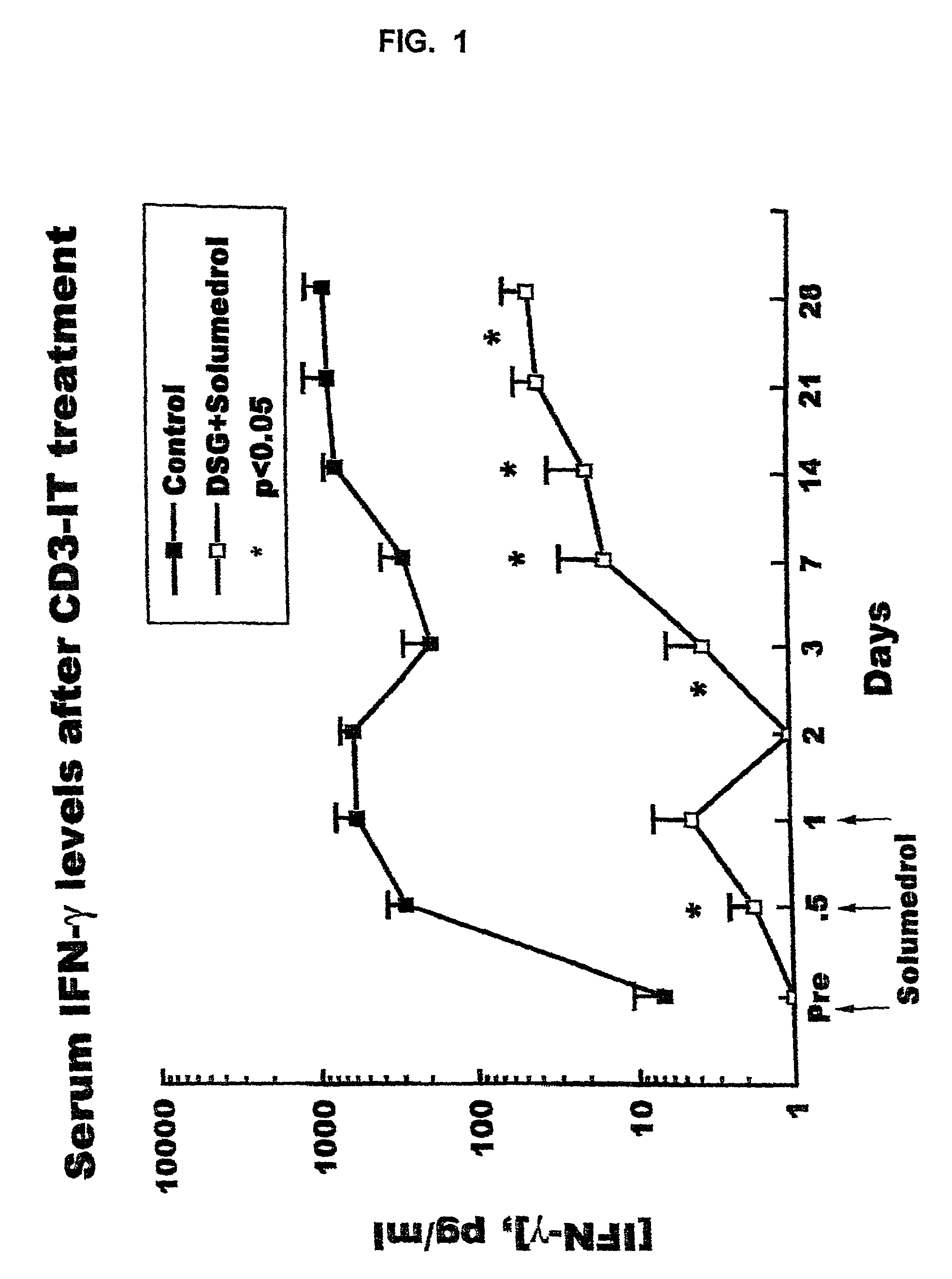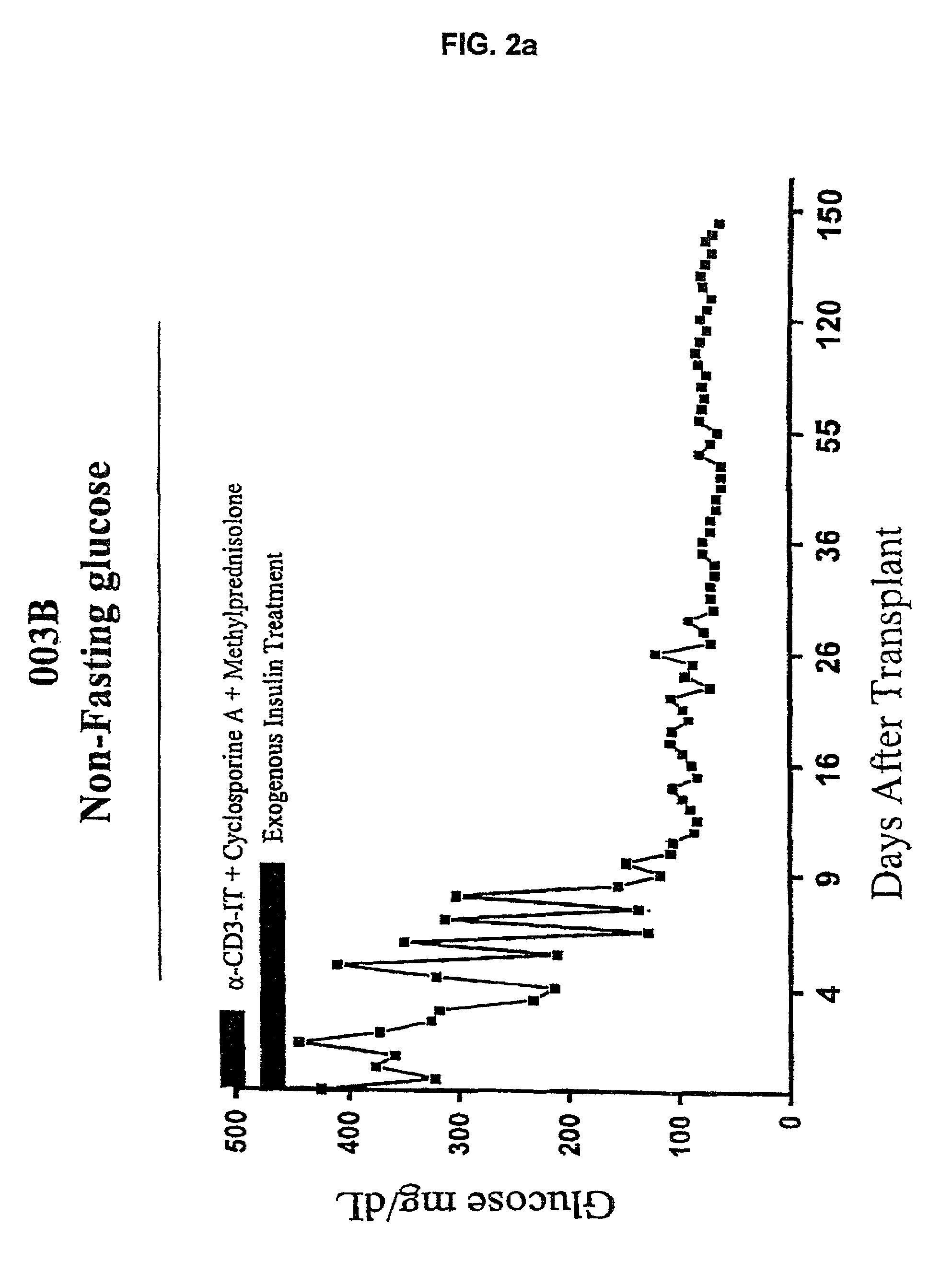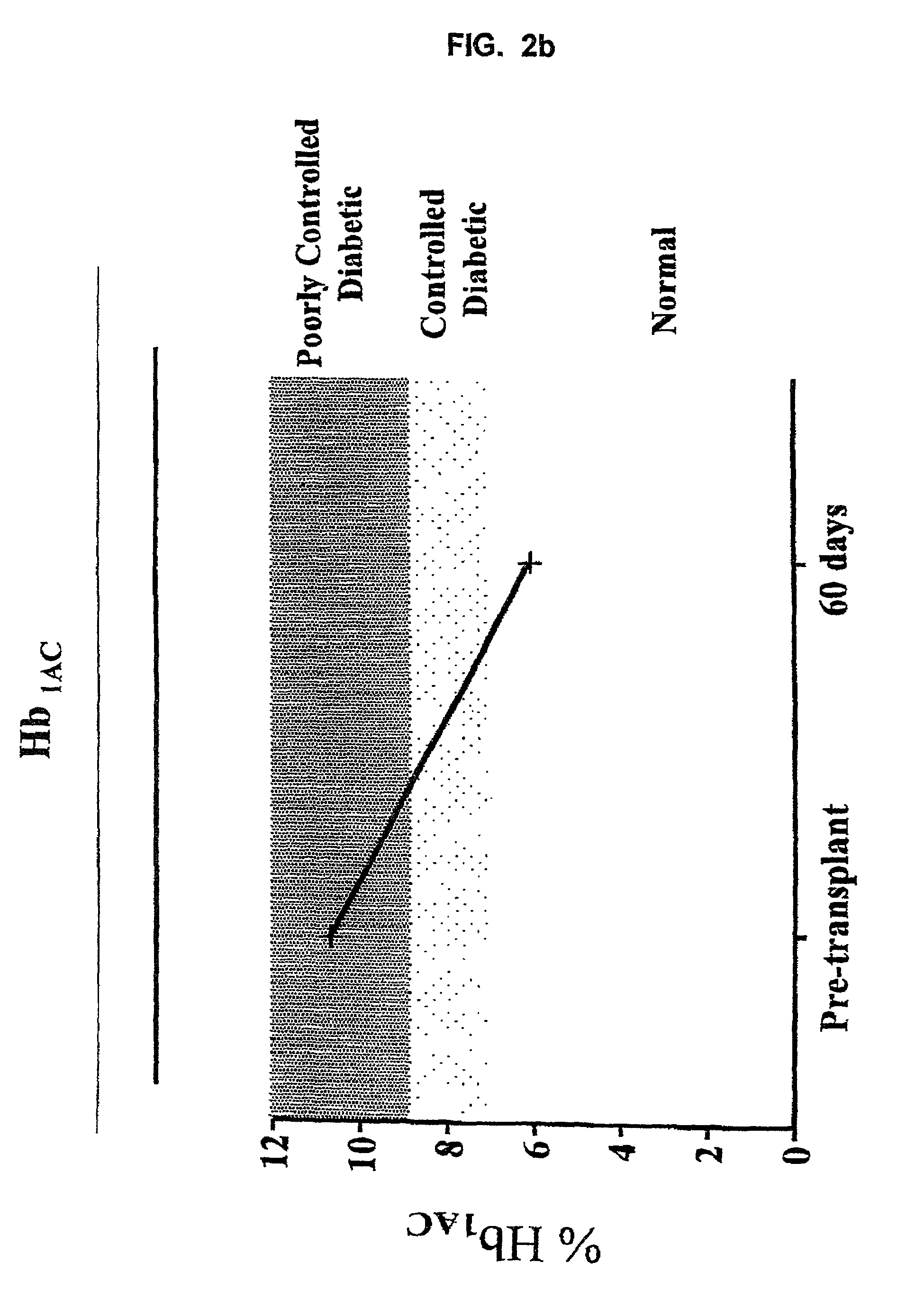Use of immunotoxins to induce immune tolerance to pancreatic islet transplantation
a technology of immunotoxin and pancreatic islet, which is applied in the direction of antibody medical ingredients, peptide/protein ingredients, drug compositions, etc., can solve the problems of difficult treatment, renal failure, and inability to achieve euglycemia, and achieves long-term islet cell function, prevents pancreatic islet cell rejection, and reduces the t-cell population of the subj
- Summary
- Abstract
- Description
- Claims
- Application Information
AI Technical Summary
Benefits of technology
Problems solved by technology
Method used
Image
Examples
example 1
Establishment of Tumors
[0088]The experimental design of the studies that give rise to the present invention was dictated by the goal of having an animal model as closely relevant to human in vivo tumor therapy as possible. In order to minimize the host killer cell immune response, bg / nu / xid strain of nude mice were used Camel-Reid and Dick (1988) Science 242:1706). The human T cell leukemia cell line, Jurkat, was chosen because of previous studies with this line and its relatively normal average complement of CD3 receptors (Preijers et al. (1988) Scand. J. Immunol. 27:553). The line was not cloned so that receptor variation among individual cells existed a scheme was developed whereby well established tumors of constant mass equal to 0.1% of body weight (≈4×107 cells) could be achieved 7 days after inoculation of Jurkat cells (see Dillman et al. (1988) Cancer Res. 15:5632). This required prior irradiation and inoculation with lethally irradiated helper feeder cells (see Dillman et a...
example 2
Guinea Pig Studies
[0090]Immunotoxin toxicity studies were performed in guinea pigs, an animal (like humans) with a high sensitivity to diphtheria toxin (mice are highly resistant to diphtheria toxin). Therapy of CRM9 conjugates was set at ½ the guinea pig minimum lethal dose. In this study, minimum lethal dose (MLD) is defined as the minimum tested dose which results in both non-survivors and survivors over a 4 week evaluation period. All animals survive when a MLD is reduced by 0.5. MLD was evaluated in guinea pigs (300–1000 g) by subcutaneous injection. The following MLDs were found and are listed as μg of toxin / kg body weight; DT, 0.15; CRM9, 30; anti-CD5-DT (cleavable), 0.65; anti-CD5-CRM9 (non-cleavable), 150. Finally, the therapeutic efficacy of the immunotoxin treatment in producing tumor regressions was compared to graded doses of whole body irradiation which resulted in similar tumor regressions.
example 3
Comparison of Immunotoxins
[0091]Several types of immunotoxins were compared in this study. They were synthesized as previously described by thiolating both the monoclonal antibody moiety and the toxin moiety and then crosslinking the bismaleimide crosslinkers (Neville et al. (1989) J. Biol. Chem. 264:14653). Purification was performed by size exclusion HPLC columns and fractions containing 1:1 toxin:antibody mol ratios were isolated for these studies. Conjugates made with an acid-labile crosslinker bismaleimidoethoxy propane were compared with a non-cleavable, bismaleimidohexane. Conjugates made with this cleavable crosslinker have been shown to hydrolyze within the acidifying endosome releasing free toxin moieties with half-times of hydrolysis measured at pH 5.5 of 36 min (Neville et al. (1989) J. Biol. Chem. 264:14653).
[0092]The results of this study are tabulated in Table I. Non-treatment groups such as group 10, groups treated with anti-CD5 immunotoxins (groups 5 and 6), and gro...
PUM
| Property | Measurement | Unit |
|---|---|---|
| time | aaaaa | aaaaa |
| time | aaaaa | aaaaa |
| time | aaaaa | aaaaa |
Abstract
Description
Claims
Application Information
 Login to View More
Login to View More - R&D
- Intellectual Property
- Life Sciences
- Materials
- Tech Scout
- Unparalleled Data Quality
- Higher Quality Content
- 60% Fewer Hallucinations
Browse by: Latest US Patents, China's latest patents, Technical Efficacy Thesaurus, Application Domain, Technology Topic, Popular Technical Reports.
© 2025 PatSnap. All rights reserved.Legal|Privacy policy|Modern Slavery Act Transparency Statement|Sitemap|About US| Contact US: help@patsnap.com



